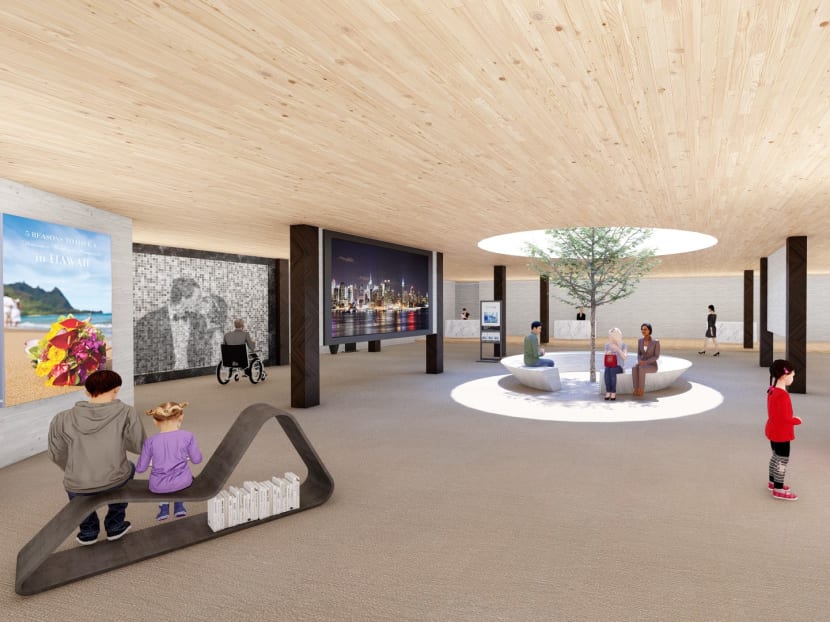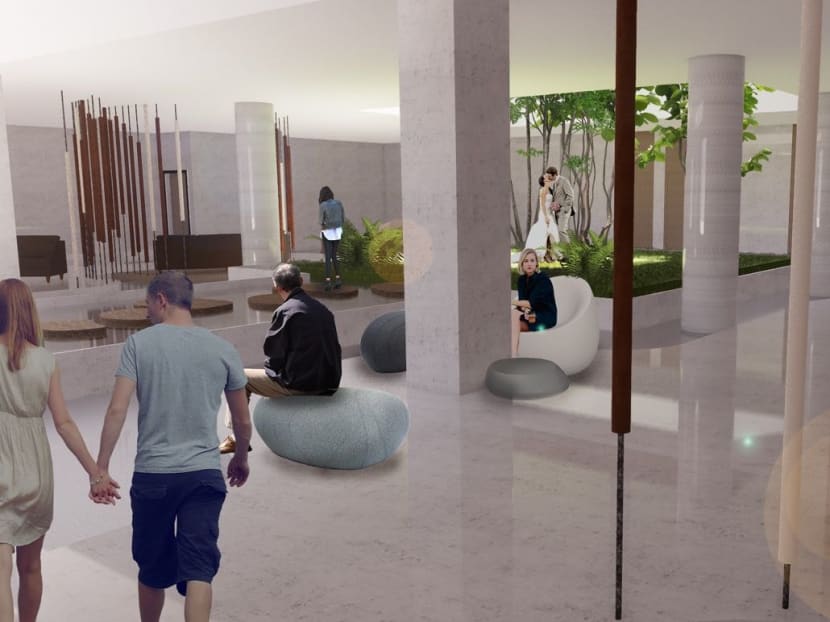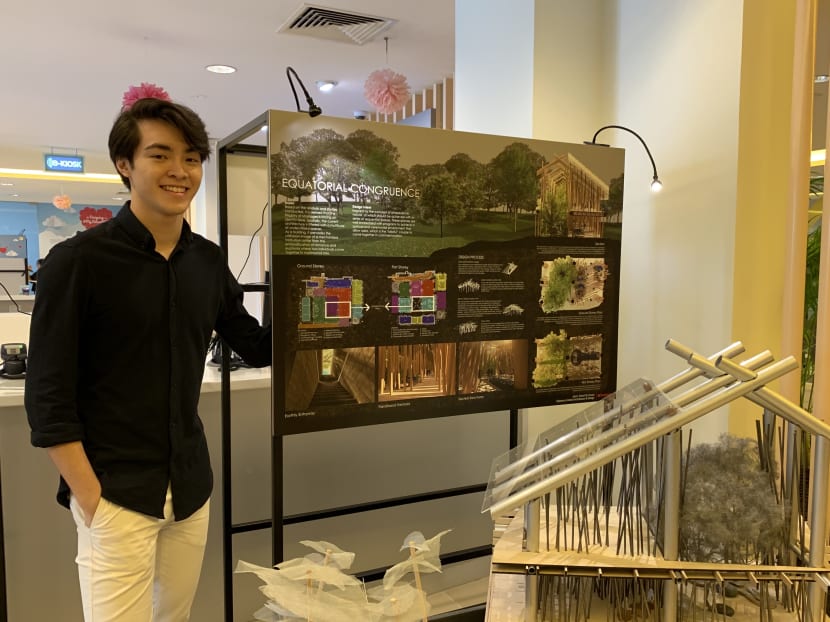Youths propose design concepts to give ROM building a new lease of life
SINGAPORE — Nestled next to the lush greenery at Fort Canning is a building where thousands of couples say their vows and “I do's” every year. But despite its scenic location, the building that houses the Registry of Marriages (ROM) and the Registry of Muslim Marriages (ROMM) has been described as tacky and unromantic.

This design of the building that houses the Registry of Marriages and the Registry of Muslim Marriages, done by a group of students, features a lobby with an open concept.
SINGAPORE — Nestled next to the lush greenery at Fort Canning is a building where thousands of couples say their vows and “I do's” every year.
But despite its scenic location, the building that houses the Registry of Marriages (ROM) and the Registry of Muslim Marriages (ROMM) has been described as tacky and unromantic.
Now, several students from Ngee Ann Polytechnic, Temasek Polytechnic and the Singapore University of Technology and Design (SUTD) have come up with ideas to modernise the 36-year-old building.
Among their proposals: Revamp the solemnisation rooms by tapping natural lighting, and overhaul the waiting areas with gardens and by installing interactive panels instead.
As part of their curriculum, about 140 students from the three institutes of higher learning took on the project to redesign the iconic building, which is scheduled to undergo renovation works in the middle of next year. The two-storey building was last refurbished in 2010.
Seven design concepts were eventually shortlisted based on their creativity and practicality, and the students presented their proposals to Mr Desmond Lee, Minister for Social and Family Development, on Friday (Aug 23).
FEELS LIKE A ‘POLYCLINIC’
The students kicked off their project in March this year. After various site visits and research surveys, they found that a common sentiment among visitors and married couples was that the building now felt like a “polyclinic”.
The main reason for this is the ROM’s queue ticketing system, where upon arriving at the location, couples take a printed ticket and wait for their queue number to flash on the display screens.
Miss Tanya Lim, a third-year student from Ngee Ann Polytechnic whose design concept was among the final seven chosen, said: “It feels like a polyclinic now, with the plastic chairs all lined together in a row.”
To enliven the dull atmosphere, Miss Lim proposed to replace the current waiting area with a central garden, which she hoped would create a “zen and relaxed” atmosphere for couples instead.
Smaller and more “intimate” waiting spaces can then be spread out in other areas of the lobby, she proposed.

SPRUCING UP SOLEMNISATION ROOMS
Miss Lim, who studies sustainable urban design and engineering with a specialisation in architecture, said that she also would like to utilise the natural lighting in the solemnisation rooms.
“Currently, the solemnisation rooms are designed in a way where the curtains are closed, and they are opened only after the couples say their vows,” she said.
Mr Jared De Souza, 19, a second-year interior architecture and design student at Temasek Polytechnic, incorporated greenery into his design, with an idea to have a “forest of columns” resembling intertwining trees in the main building.
He also proposed to shift the solemnisation rooms from the first floor to the second, to take advantage of the natural light and underutilised spaces in the upper rooms.
The solemnisation rooms right now feel “cramped”, he noted.

INTEGRATING TECHNOLOGY, INFORMATION PANELS
Separately, a group of seven SUTD students hope to use technology to make the solemnisation process more efficient and enjoyable.
The group interviewed about 300 millennials and 50 married couples to get feedback on the ROM building. Mr Shawn Low, 24, a final-year student from the group, said that a common sentiment was that the place felt “too systematic and sterile”.
To break the monotony, the group’s design, titled #EngagetheEngaged, features a lobby with an open concept.
Digital panels displaying relevant information for couples such as how to buy Build-to-Order flats and “honeymoon packages” can also be installed, instead of having rows of chairs in the common waiting area, where people just “sit and wait for their turn”.
Queue numbers could also be displayed on these panels, or visitors could be informed via their smartphones, Mr Low said.
The Ministry of Social and Family Development said that it will study the students’ proposals to see how to incorporate feasible elements into its refurbishment plans.
Mr Lee said that he was glad to see young people taking part in the project.
“We wanted to make sure that in refurbishing this building, we don't just do it clinically,” he said to the students. “We wanted Singaporeans, young Singaporeans, to invest your emotion into designing this building… We wanted (it) to be relevant to the next generation and (those after that).”
The designs will be on display for public viewing at the building until Sept 20, and visitors may offer their views on the proposals.






